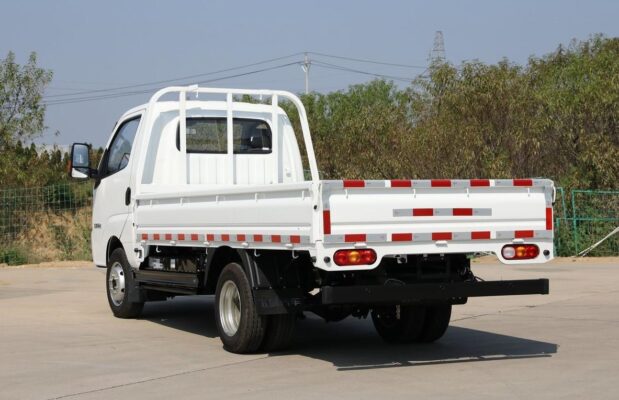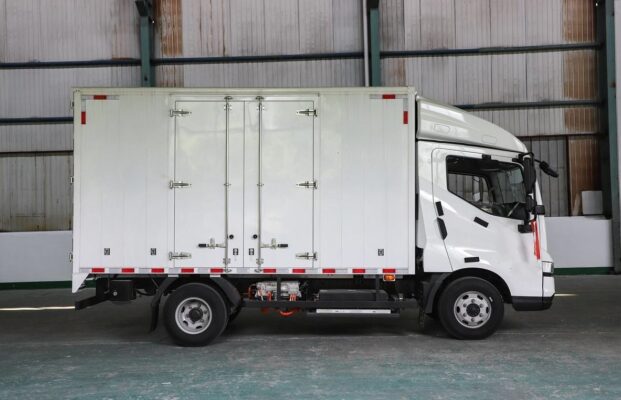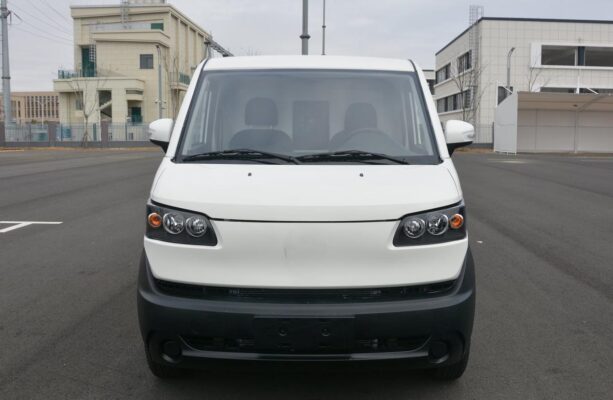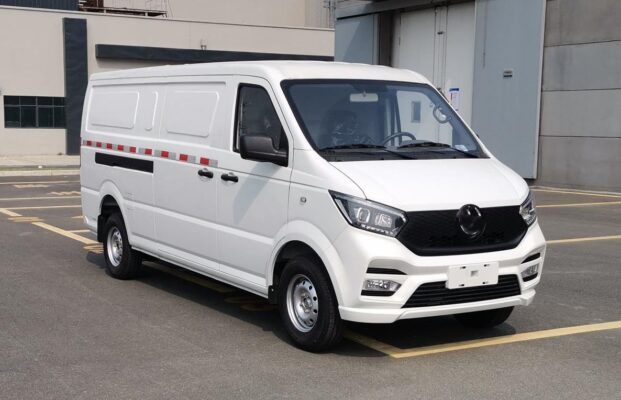Njohuri për kamionët elektrikë
Knowledge Analysis of Electric Vehicle Drive Motor
Postuar në nga Kamionë Elektrikë
In the previous issue, we shared the knowledge analysis of the power battery. This time, let’s delve into the electric drive system, which is one of the three core components of pure electric vehicles. The motor drive system directly converts electrical energy into mechanical energy, and subsequently, this mechanical energy is utilized to generate kinetic energy. Undoubtedly, the core device within the electric drive system is the motor.
In reality, the composition and classification methods of the motor are highly complex. So, let’s narrow our focus and concentrate on the characteristics and distinctions of four common types of motors, namely permanent magnet synchronous motors, AC asynchronous motors, switched reluctance motors, and in-wheel motors.

● What is a Permanent Magnet Synchronous Motor
The permanent magnet synchronous motor is currently the most prevalently utilized motor type in pure electric passenger vehicles. This particular motor employs a permanent magnet for the rotor and an energized winding for the stator. The rotating magnetic field generated by the energized winding interacts with the permanent magnet, thereby generating torque. Simultaneously, the rotor speed remains consistently synchronized with the rotational speed of the stator’s rotating magnetic field, eliminating the need for the installation of brushes and mechanical commutation structures.
Due to its lightweight nature, compact size, and the absence of speed differences, the permanent magnet synchronous motor boasts a series of advantages such as high efficiency, a high torque overload capacity, a high power density, and low noise levels. Consequently, it has gained favor among numerous automakers. The vast majority of mainstream household electric vehicles available in the market are equipped with permanent magnet synchronous motors.
Of course, the renowned permanent magnet synchronous motor is not devoid of shortcomings. For instance, under extremely intricate and demanding working conditions, the permanent magnet material on the rotor may undergo magnetic degradation. To ensure the stability of the permanent magnet material, the addition of rare earth elements becomes necessary. However, this action leads to an increase in the manufacturing cost of the entire electric drive system.
Let’s explore this in more detail. The lightweight and compact design of the permanent magnet synchronous motor contribute to reduced overall vehicle weight and improved space utilization. The high efficiency and torque characteristics make it suitable for various driving scenarios, providing smooth and powerful acceleration. The elimination of brushes and mechanical commutation structures simplifies the motor’s design and reduces maintenance requirements. However, the reliance on rare earth elements for magnetic stability poses challenges in terms of cost and supply chain sustainability.

● What is an AC Asynchronous Motor
The AC asynchronous motor, also referred to as an induction motor. Its operational principle involves the interaction between the rotating magnetic field formed after the stator winding and the induced current of the rotor winding, generating electromagnetic torque that subsequently drives the rotor to rotate. At the same time, since the rotor speed is consistently lower than the synchronous speed of the magnetic field, this type of motor is appropriately termed an asynchronous motor.
In comparison with other motor types, the distinctive characteristics of AC asynchronous motors lie in their straightforward structure, high torque output at low speeds, high reliability, suitability for high-speed operation, and the relative ease of achieving high power. Nevertheless, when AC asynchronous motors operate at high speeds, the rotor is prone to significant heat generation, which imposes more rigorous and complex requirements on its cooling system. Për më tepër, the control system of asynchronous motors is comparatively intricate. In contrast to permanent magnet synchronous motors, the power density and efficiency of AC asynchronous motors are marginally inferior, particularly with lower efficiency at low speeds.
Currently, household pure electric vehicle models employing AC asynchronous motors remain relatively scarce in the market. At present, they are mainly concentrated in Tesla models and some pure electric models equipped with dual front and rear motors, with the most familiar examples being Model S and NIO ES6 Performance Edition.
Let’s further elaborate on these points. The simple structure of AC asynchronous motors reduces manufacturing complexity and cost. The ability to deliver high torque at low speeds is beneficial for initial acceleration and handling heavy loads. The suitability for high-speed operation makes them applicable in certain performance-oriented vehicles. However, the heat generation issue at high speeds requires efficient cooling solutions to prevent overheating and potential damage. The complexity of the control system adds to the overall system cost and requires more sophisticated control algorithms for optimal performance.

● What is a Switched Reluctance Motor
The switched reluctance motor is rather unfamiliar to the majority of people. It represents a newly developed type of speed-regulating motor. This type of motor features a simpler structure and lower costs. The switched reluctance motor primarily consists of four components: the switched reluctance motor (SRM), the power converter, the controller, and the rotor position detector. The switched reluctance motor (SRM) serves as the element that realizes the conversion of mechanical and electrical energy within the SRD. The rotor lacks windings or permanent magnets, and the stator incorporates only a few windings. It possesses advantages such as high reliability, high efficiency, favorable heat dissipation characteristics, a large starting torque with a small current, a wide speed regulation range, and suitability for high-speed operation.
The drawback lies in the significant torque ripple, which is prone to causing substantial vibrations. This is because the torque generated on the rotor is a result of the superposition of a series of pulse torques. However, since the combined torque is not a constant torque, it adversely affects the low-speed operation performance of the motor. Për më tepër, the noise produced by the switched reluctance motor is significantly louder than that of other motor types, severely impacting the user experience. Although it is challenging to encounter switched reluctance motors in household electric vehicle models, they still find their application in some pure electric buses and coaches.
Let’s take a closer look at these aspects. The simplicity of the structure and low cost make the switched reluctance motor an attractive option in certain applications where cost and simplicity are critical factors. The high reliability and efficiency contribute to its durability and energy-saving capabilities. However, the torque ripple and noise issues limit its usage in passenger vehicles where smooth operation and low noise are of greater importance.

● What is an In-Wheel Motor
The in-wheel motor, as the name implies, involves assembling the motor within the wheel. Simultaneously, a series of drive systems, transmission systems, and braking systems are integrated into the wheel hub, thereby simplifying a substantial number of mechanical components and facilitating an improvement in the transmission efficiency. Currently, there are mainly four types applied to in-wheel motors: permanent magnet synchronous motors, AC asynchronous motors, switched reluctance motors, and transverse flux motors. From the perspective of the driving mode, the in-wheel motors utilized in pure electric vehicles are mostly of the outer rotor type. They offer advantages such as a simple structure, low noise, a large output torque, and a wide speed regulation range.
Although many automakers are vigorously pursuing the development of in-wheel motor technology, only an extremely small number of mass-produced vehicles are currently employing it. Currently, there are numerous factors restricting the widespread utilization of in-wheel motors. Së pari, the weight of the in-wheel motor poses a challenge. Given that the motor itself incorporates a significant amount of metals and permanent magnet materials, if the motor is added beneath the suspension, the unsprung mass increases, which is not conducive to daily driving and can even prove difficult to control under extreme conditions.
The confined internal space constitutes another major issue faced by in-wheel motors. Due to the limited space within the wheel, when integrating the motor, transmission system, and braking device together, the heat dissipation of the motor becomes highly challenging. Për më tepër, it is also difficult to increase the size of the motor and braking mechanical components, resulting in significant limitations on power and braking force. It must be acknowledged that the in-wheel motor represents an excellent technical concept. However, considering the current technical issues such as reliability, heat dissipation performance, and coordinated control, there is still a considerable distance to cover in the optimization and upgrade process of in-wheel motors.
Si përfundim, each type of motor has its unique characteristics and limitations. The selection of the appropriate motor type for an electric vehicle depends on various factors such as performance requirements, cost considerations, and technological maturity. As the automotive industry continues to evolve, ongoing research and development efforts are aimed at addressing the existing challenges and maximizing the potential of these motor technologies to drive the advancement of electric vehicles.